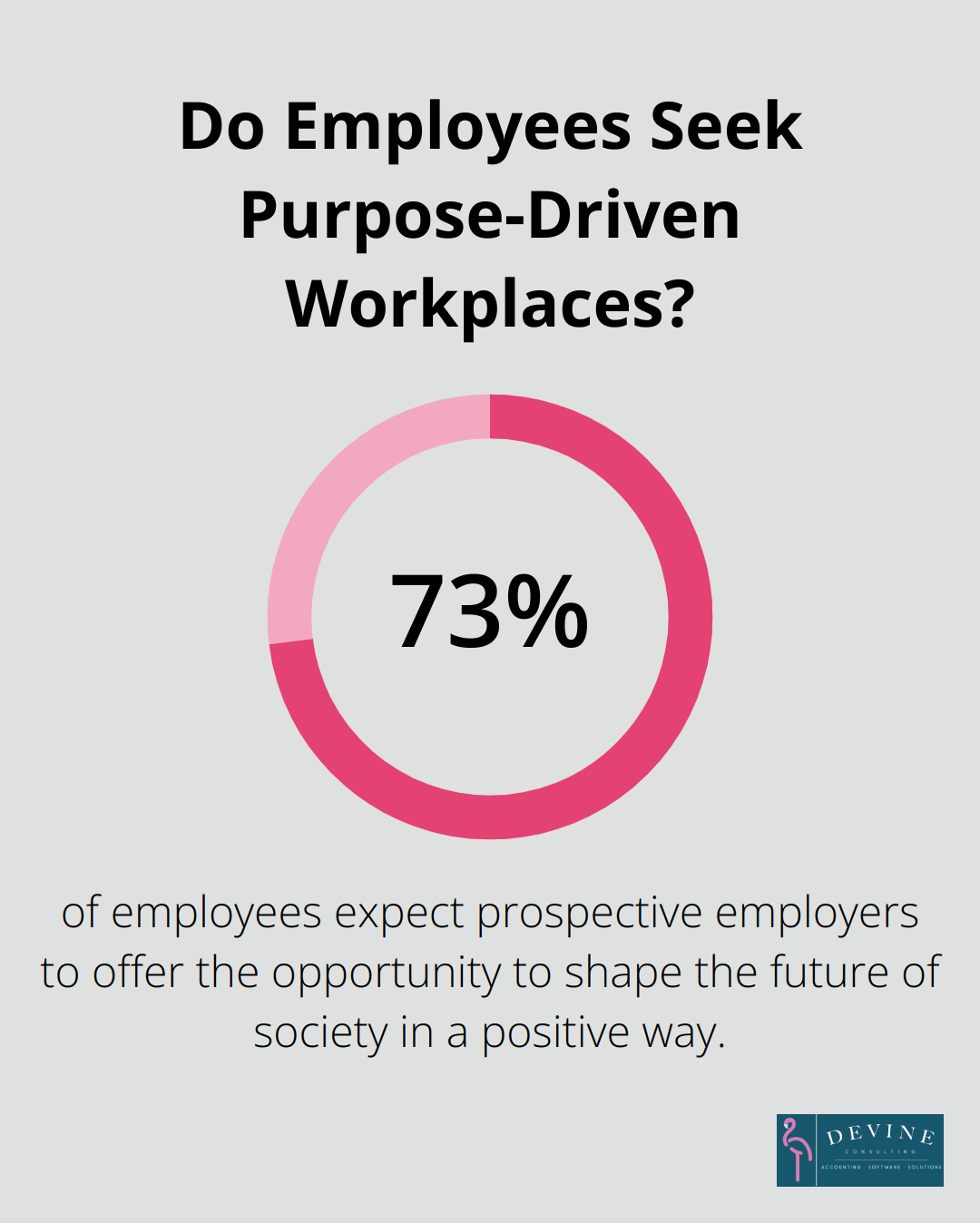Limitations of Profit Maximization: What to Consider
Profit maximization has long been the holy grail of business strategy. However, at Devine Consulting, we’ve observed that this singular focus can lead to significant pitfalls.
The limitations of profit maximization goals are becoming increasingly apparent in today’s complex business landscape. This blog post explores why a more balanced approach to business objectives is not just beneficial, but essential for long-term success.
Short-Term Profits or Long-Term Value?
The Trap of Short-Term Thinking
At Devine Consulting, we observe how businesses often fall into the trap of pursuing short-term profits at the expense of long-term value. This myopic approach leads to decisions that boost immediate financial results but undermine a company’s future prospects.

Companies fixated on quarterly earnings often resort to tactics that harm their long-term viability. These tactics include:
- Cutting corners on quality
- Reducing investment in research and development
- Implementing aggressive cost-cutting measures that demoralize employees
A 2016 survey by FCLT Global found that 65% of all respondents say the pressure on senior executives to deliver short-term results has increased in the past five years.
Building Sustainable Growth Strategies
Successful businesses understand the importance of balancing short-term performance with long-term value creation. This balance involves investing in areas that may not yield immediate returns but are essential for future success, such as:
- Employee development and retention
- Innovation and product development
- Building strong customer relationships
- Enhancing operational efficiency
A McKinsey study revealed that companies with a long-term focus outperformed their short-term-oriented peers on several key financial metrics (including revenue growth, earnings growth, and market capitalization).
Real-World Examples of Long-Term Value Creation
Several companies demonstrate the benefits of prioritizing long-term value over immediate gains:
Amazon: For years, Amazon reinvested heavily in its infrastructure and technology, often at the expense of short-term profits. This strategy allowed the company to build a dominant e-commerce platform and diversify into new areas like cloud computing.
Patagonia: The outdoor clothing company consistently prioritizes environmental sustainability over short-term profits. This approach not only reduces the company’s environmental impact but also strengthens its brand and customer loyalty.
Costco: Despite pressure from Wall Street, Costco maintains its policy of paying employees above-average wages and providing comprehensive benefits. This strategy results in lower turnover, higher productivity, and strong customer service, contributing to the company’s long-term success.
The Path Forward: Balancing Profit and Purpose
These examples illustrate that while short-term profits matter, they shouldn’t come at the cost of long-term value creation. Businesses that strike the right balance position themselves better to achieve sustainable growth and weather economic uncertainties.
As we move forward, it’s important to consider not just the financial implications of profit maximization, but also its ethical dimensions. How do a company’s profit-seeking activities impact its various stakeholders? This question leads us to our next topic: the ethical considerations in profit maximization.
The Ethics of Profit: Beyond the Bottom Line
The Ripple Effect of Business Decisions
Every business decision creates a ripple effect that extends far beyond shareholders. Employees, customers, suppliers, local communities, and the environment all feel the impact of a company’s profit-driven choices. A cost-cutting measure that leads to layoffs might boost short-term profits but can devastate local economies and erode employee morale.

A 2019 study by Edelman revealed that 73% of employees expect prospective employers to offer the opportunity to shape the future of society in a positive way. This statistic highlights the growing importance of ethical considerations in attracting and retaining top talent.
Environmental and Social Responsibility as a Business Imperative
Environmental and social responsibility are no longer optional add-ons but essential components of a sustainable business strategy. Companies that ignore these aspects risk severe backlash and financial consequences.
The fashion industry has faced increasing scrutiny for its environmental impact. In response, companies like Patagonia have made sustainability a core part of their business model. Their Worn Wear program (which repairs and resells used clothing) not only reduces waste but also creates a new revenue stream and strengthens customer loyalty.
The Power of Brand Perception
In today’s interconnected world, a company’s reputation can be its most valuable asset or its biggest liability. Ethical missteps can lead to immediate and lasting damage to brand perception, while a strong ethical stance can enhance brand value and customer loyalty.
A 2021 Accenture report found that consumer values and buying motivations have fundamentally changed, shifting away from price and quality. This underscores the direct link between ethical behavior and consumer behavior.
Implementing Ethical Profit Strategies
To balance profit maximization with ethical considerations, businesses can:
- Conduct regular stakeholder impact assessments
- Integrate environmental and social metrics into performance evaluations
- Invest in transparent supply chain management
- Develop clear ethical guidelines and ensure they’re followed at all levels of the organization
Companies that adopt these strategies create a virtuous cycle where ethical behavior enhances reputation, attracts customers and talent, and ultimately contributes to long-term profitability.
Balancing Financial Goals with Stakeholder Interests
The most successful companies will balance financial goals with ethical considerations, creating value for all stakeholders. This holistic approach not only mitigates risks but also opens up new opportunities for innovation and growth. As we explore alternative business objectives, we’ll see how companies can move beyond profit maximization to create sustainable, long-term success.
Beyond Profit: Redefining Business Success
Customer Satisfaction as a Key Metric
Many businesses now measure success beyond profit margins. Customer satisfaction has become a critical performance indicator. Companies that excel in customer experience grow revenues 4-8% above their market. This correlation makes sense, as satisfied customers often become repeat buyers and brand advocates.

To boost customer satisfaction, businesses invest in:
- Personalized experiences
- Responsive customer service
- Product quality and innovation
Zappos, the online shoe retailer, exemplifies this approach. Their 365-day return policy and 24/7 customer support have cultivated a loyal customer base and driven steady growth.
Employee Well-being as a Business Priority
Employee well-being significantly impacts business success. Companies with engaged workforces have higher earnings per share (EPS), as revealed by Gallup’s research.
Progressive companies focus on:
- Work-life balance initiatives
- Professional development opportunities
- Inclusive and diverse work environments
Google stands out for its employee-centric culture. They provide free meals, on-site wellness services, and generous parental leave policies. This focus on employee well-being has helped Google consistently rank as one of the best places to work, attracting top talent in a competitive industry.
Strategic Market Share Expansion
While profit maximization often leads to short-term thinking, expanding market share requires a more strategic, long-term approach. Companies increasingly look at sustainable ways to grow their market presence.
Effective strategies include:
- Identification and targeting of underserved market segments
- Development of innovative products or services
- Building of strategic partnerships or acquisitions
Tesla’s approach to the electric vehicle market illustrates this strategy. They initially targeted the luxury car segment, building a strong brand and loyal customer base. This strategy allowed them to gradually expand into more affordable vehicle categories, significantly growing their market share.
These alternative business objectives (customer satisfaction, employee well-being, and strategic market share expansion) are not mutually exclusive with profitability. In fact, they often drive long-term financial success. Companies that balance these objectives with profit goals position themselves better to thrive in today’s complex business environment.
Final Thoughts
The limitations of profit maximization goals highlight the need for a balanced approach in today’s business landscape. Companies must recognize that true business value extends beyond financial metrics to include customer satisfaction, employee well-being, and social responsibility. This holistic view aligns financial objectives with broader stakeholder interests, fostering sustainable growth and long-term success.

At Devine Consulting, we understand the importance of this comprehensive approach to business success. Our accounting solutions help businesses achieve financial stability while focusing on their core operations and long-term growth strategies. We support companies in navigating financial complexities while maintaining a holistic view of their business objectives.
Companies should regularly reassess their goals and strategies to avoid the pitfalls of short-term profit maximization. This reassessment enables businesses to build resilience, foster innovation, and create sustainable value for all stakeholders (in an ever-changing business environment). A more comprehensive view of success positions companies to thrive in today’s complex, interconnected world.


